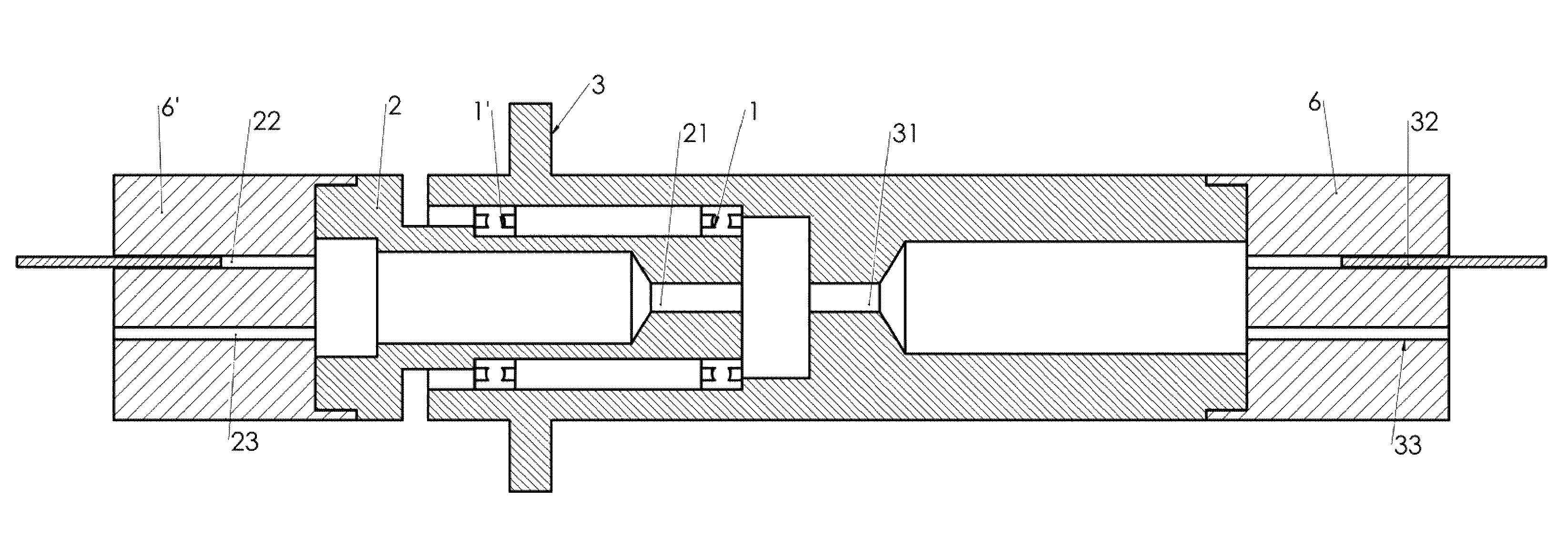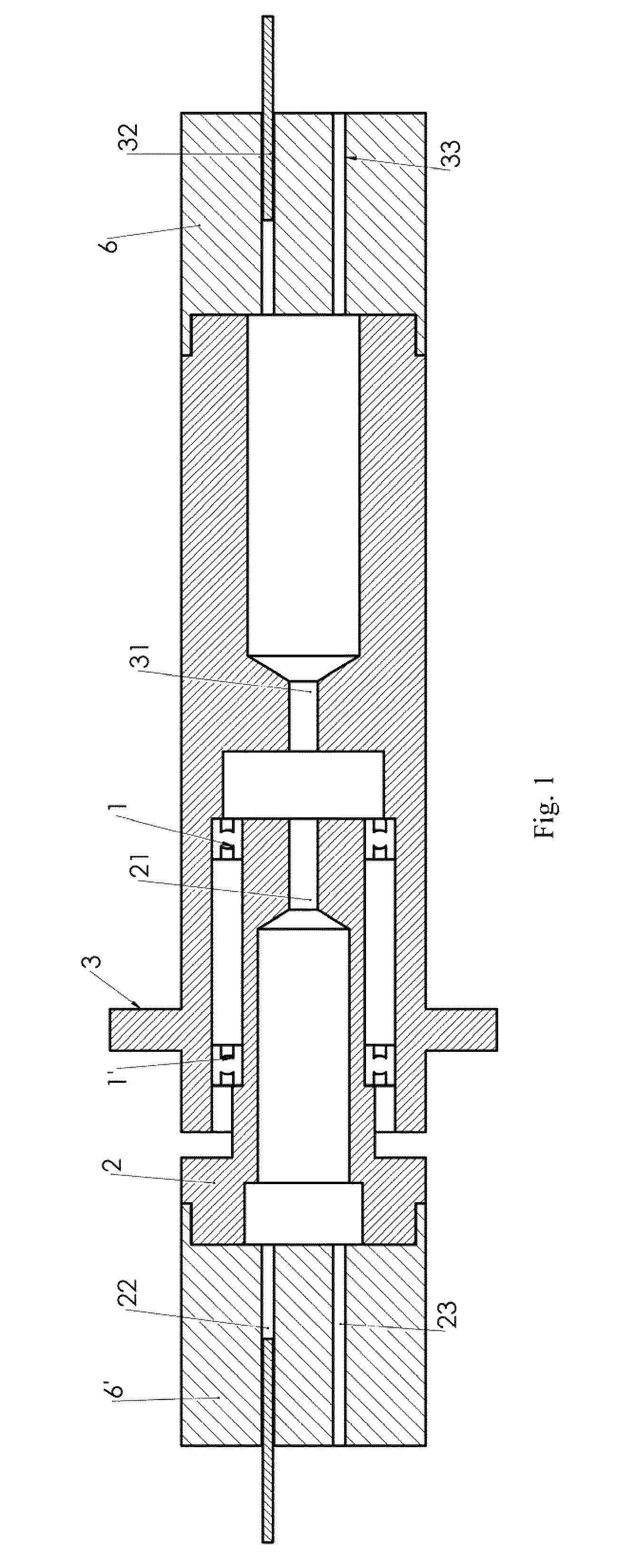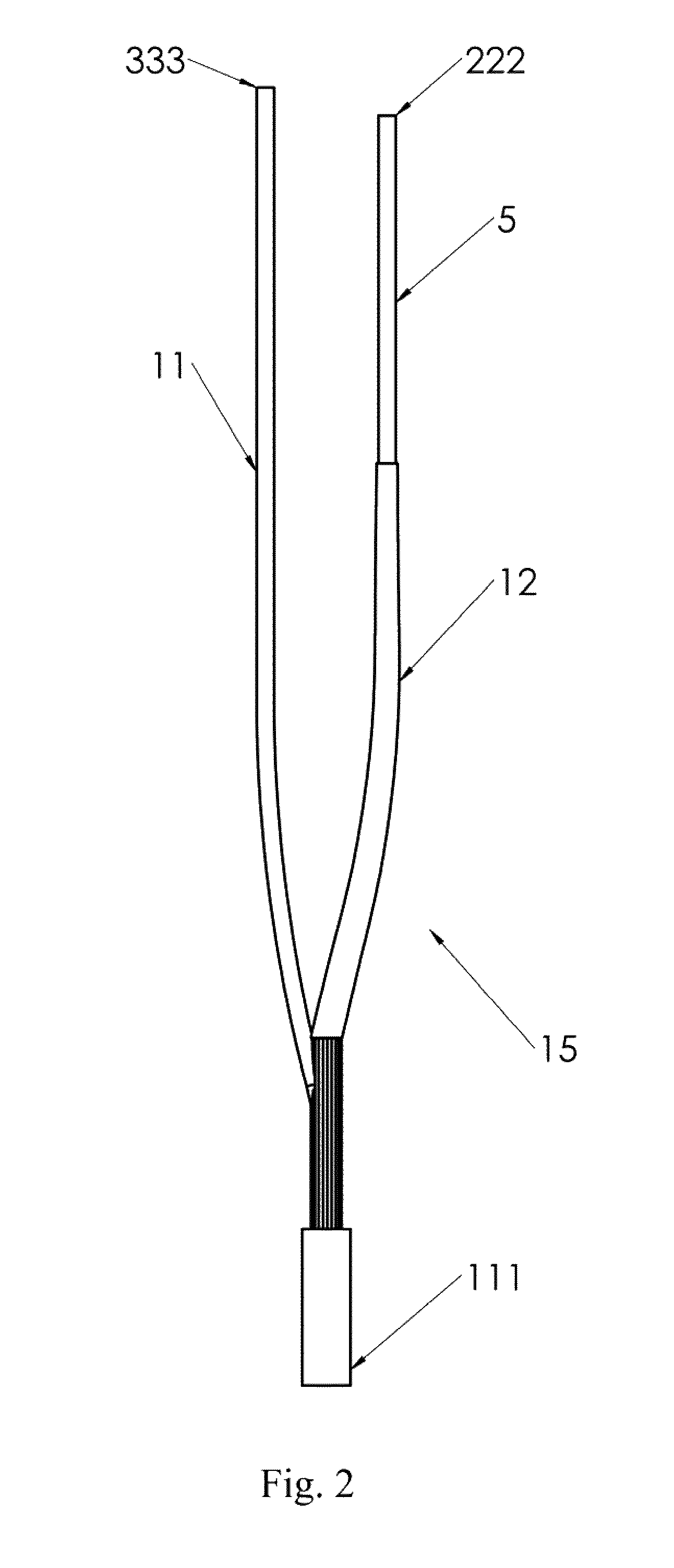Two-channel plastic optical fiber (POF) rotary joint
a plastic optical fiber and rotary joint technology, applied in the field of two-channel plastic optical fiber rotary joints, can solve the problems of difficult magnetic interaction accuracy, difficult to manufacture facing lens systems, and almost all prior arts of fiber optical rotary joints are hardly used for plastic fiber applications, and achieve low-profile and compact structure.
- Summary
- Abstract
- Description
- Claims
- Application Information
AI Technical Summary
Benefits of technology
Problems solved by technology
Method used
Image
Examples
Embodiment Construction
[0019]Refers to FIG. 1, a preferred mechanical embodiment of the present invention consists of a rotatable component 2 with a central hole 21, a fixed component 3 with a central hole 31, a pair of bearing 1 and 1′ to enable the component 2 and 3 rotatable relatively. The rotatable component 2 further comprises fiber holder 6′ which has two coupling holes 22 and 23. The fixed component 3 further comprises fiber holder 6 which has two coupling holes 32 and 33. The axis of the rotation is the geometrical axis of the component 2 and 3.
[0020]As shown in FIG. 2, a typical “Y” shaped plastic optical fiber bundle assembly 15 (or 15′) has its bottom side 111 (or 111′), the first top side 333 (or 333′) and second top side 222 (or 222′). The “Y” shaped plastic optical fiber bundle assembly 15 (or 15′) includes a large-core plastic fiber 11 (or 11′), a group of small-core plastic fibers 12 (or 12′) and a coupling fiber 5 (or 5′). Said large-core plastic fiber 11 (or 11′) has its front portion a...
PUM
 Login to View More
Login to View More Abstract
Description
Claims
Application Information
 Login to View More
Login to View More - R&D
- Intellectual Property
- Life Sciences
- Materials
- Tech Scout
- Unparalleled Data Quality
- Higher Quality Content
- 60% Fewer Hallucinations
Browse by: Latest US Patents, China's latest patents, Technical Efficacy Thesaurus, Application Domain, Technology Topic, Popular Technical Reports.
© 2025 PatSnap. All rights reserved.Legal|Privacy policy|Modern Slavery Act Transparency Statement|Sitemap|About US| Contact US: help@patsnap.com



